Australian Baobab Tree
- October 12, 2023
- 0 comment
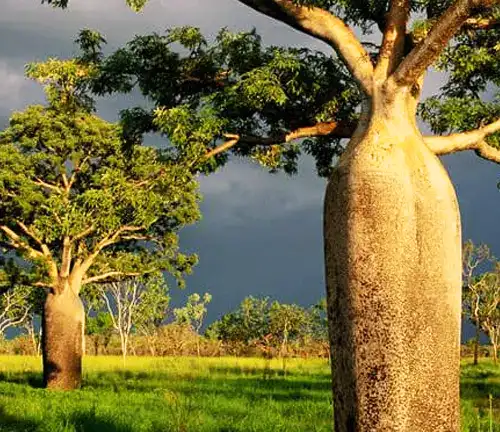
The Australian Baobab Tree, scientifically classified as Adansonia gregorii, stands as an emblematic botanical wonder in the northern regions of Australia. Popularly recognized as the “boab” or “bottle tree,” this unique species captures attention with its extraordinary bottle-shaped trunk, a distinctive feature that sets it apart from other trees in the region. The trunk serves a dual purpose, acting both as a support structure and an ingenious water reservoir, enabling the tree to endure the challenging arid conditions prevalent in its native habitat. The Australian Baobab is characterized by compound, palmate leaves that provide shade and contribute to its overall striking appearance. During the flowering season, the tree graces the landscape with large, pendulous white flowers, followed by the development of sizable, woody fruits. These fruits encase seeds within a nutrient-rich pulp, contributing to the tree’s ecological role in supporting local biodiversity.
Beyond its botanical significance, the Australian Baobab holds cultural importance, particularly among indigenous Australian communities. It stands as a living testament to the ancient landscapes and serves as a symbol of resilience and adaptability. Indigenous cultures have developed a deep connection with the boab tree, utilizing various parts for medicinal, culinary, and ceremonial purposes. The tree’s longevity and ability to thrive in harsh environments make it a revered symbol of endurance and tenacity. While often associated with the African Baobab, the Australian counterpart showcases the adaptability of the Adansonia genus to diverse ecosystems, highlighting the fascinating interplay between nature and culture in the unique Australian landscape.
| Characteristic | Description |
| Scientific Name | Adansonia gregorii |
| Family | Malvaceae |
| Native Range | Northern Australia, particularly in the Kimberley region |
| Height | Up to 15 meters |
| Trunk Diameter | Up to 2 meters |
| Growth Rate | Slow |
| Lifespan | Long-lived, potentially over 1,000 years |
| Soil Requirements | Well-drained, sandy or loamy soils |
| Threats | Habitat destruction, climate change |
| Bark | Smooth, greyish-brown |
A Brief History
The Australian Baobab Tree, scientifically known as Adansonia gregorii, stands as a botanical marvel in the vast landscapes of northern Australia. Despite its association with the African continent, this unique tree has carved its own niche in the rich biodiversity of the Australian outback.

Color/Appearance
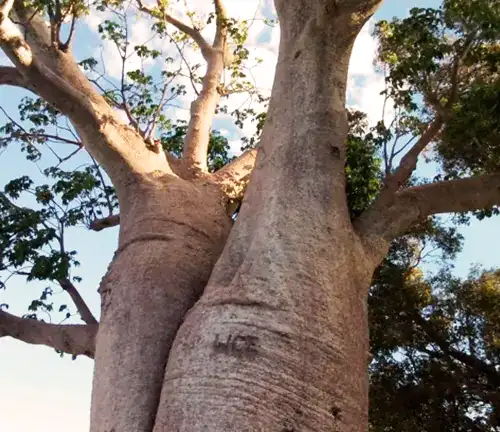
The Australian Baobab Tree boasts a distinctive appearance with a smooth, greyish-brown bark that encases a trunk of imposing size. Its leaves, arranged in a pinnate fashion with 5 to 9 leaflets, add a touch of greenery to the arid landscapes it often calls home.
Unique Features
What truly sets the Australian Baobab Tree apart is its bulbous trunk, earning it the colloquial moniker of the “upside-down tree.” This peculiar feature is not merely aesthetic; the trunk serves as a reservoir for water, allowing the tree to withstand the harsh realities of its often arid habitat.
Ecological Importance
Beyond its aesthetic appeal, the Australian Baobab Tree plays a crucial role in the ecosystems it inhabits. Providing sustenance and shelter for various wildlife, it has become an integral part of the delicate balance in Australia’s dry woodlands and savannas.

Adaptation and Resilience
The Baobab’s ability to adapt and thrive in challenging conditions showcases its resilience. Its slow growth rate and impressive lifespan, potentially exceeding 1,000 years, attest to the tree’s tenacity in the face of environmental challenges.
Cultivation and Care

Cultivating the Australian Baobab Tree requires an understanding of its native environment. Well-drained, sandy or loamy soils are ideal, and a watchful eye for potential threats, such as pests or diseases, is essential for successful growth.
Cultural and Historical Significance
Woven into the fabric of indigenous Australian cultures, the Australian Baobab Tree holds deep cultural significance. Often considered a sacred entity, it has been used for food, medicine, and shelter, forming an integral part of local traditions and beliefs.
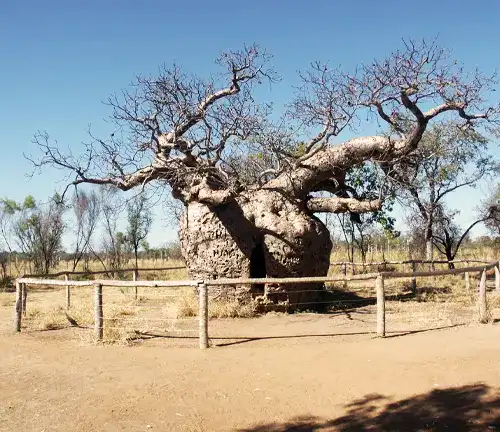
Wood Products and Applications
While not traditionally harvested for timber, the wood of the Australian Baobab Tree has found applications in various local crafts. Its fibrous bark has been utilized for weaving, and its sturdy branches have served in the construction of tools and structures.


Other Uses
The tree’s multifaceted utility extends beyond its physical components. Indigenous communities have harnessed the tree’s fruit for its edible pulp, rich in Vitamin C, contributing to the nutritional needs of those living in its vicinity.
Threats and Conservation
Despite its resilience, the Australian Baobab Tree faces threats, primarily from habitat destruction and the broader impacts of climate change. Conservation efforts are underway to protect and preserve these ancient sentinels of the Australian landscape.
Benefits
The benefits of the Australian Baobab Tree are not confined to its ecological role. Its unique features, cultural importance, and potential economic contributions through sustainable practices underscore its value in multiple spheres.
Conclusion
In conclusion, the Australian Baobab Tree stands as a testament to nature’s ability to adapt and endure. From its ancient roots in indigenous traditions to its crucial role in the ecosystem, this remarkable tree invites us to appreciate the interwoven tapestry of history, culture, and ecology that it embodies in the vast Australian wilderness.
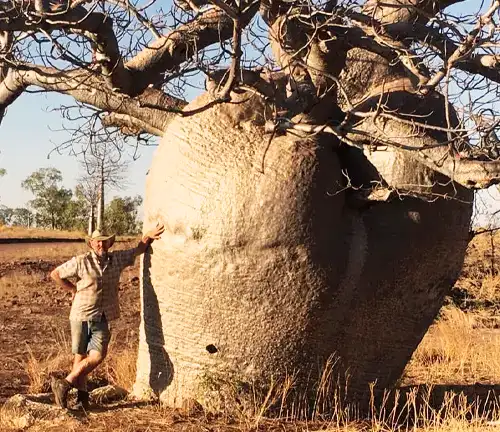
Frequently Asked Questions (FAQs)
- Why is the Australian Baobab Tree called the “upside-down tree”?
The Australian Baobab Tree earned the nickname “upside-down tree” due to its distinctive appearance. Its swollen trunk, which can store water, gives the impression that the tree is planted upside-down with its roots in the air. - Do people use the Australian Baobab Tree for medicinal purposes?
Yes, indigenous communities have a history of using various parts of the Australian Baobab Tree for medicinal purposes. The bark and leaves, in particular, have been employed to create remedies for certain ailments. - How does the Australian Baobab Tree survive in arid conditions?
The Australian Baobab Tree has adapted to arid environments through several mechanisms. Its water-storing trunk allows it to endure drought conditions, and its leaves are deciduous, helping to reduce water loss during dry periods. - Are there any cultural stories or myths associated with the Australian Baobab Tree?
Yes, the Australian Baobab Tree holds cultural significance in indigenous lore. Some communities have stories and myths that connect the tree to creation or spiritual beliefs, adding to its mystique in local cultures. - Can you eat the fruit of the Australian Baobab Tree?
Yes, the fruit of the Australian Baobab Tree is edible. The large, woody capsules contain a powdery pulp that is not only consumed for its nutritional value but also used in various culinary applications. The pulp is notably high in Vitamin C.





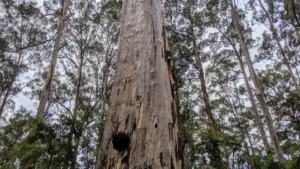
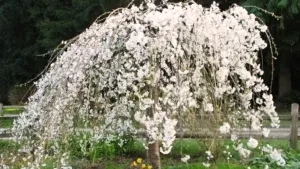
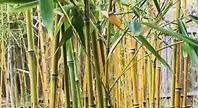
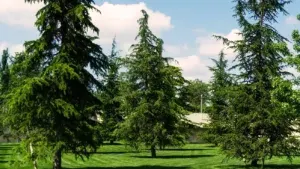
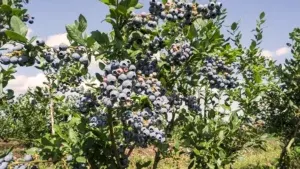

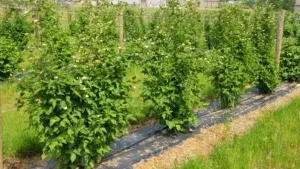
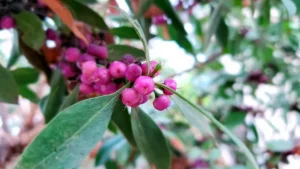
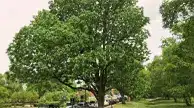
Leave your comment